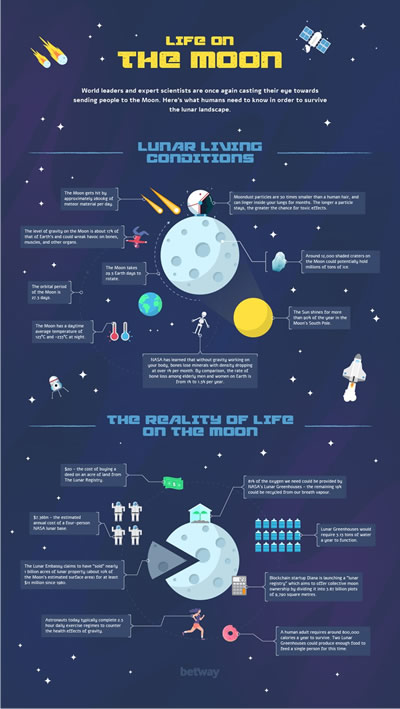Ever since man found his way into space, moon exploration has always been a keenly followed topic all across the world.
In 1969, the United States’ Apollo 11 put Neil Armstrong on the moon, making him the first man to achieve that feat. Now, President Donald Trump is keen on doing more and has announced plans to not only put more people on the moon by 2024 butconstruct a permanent base there by 2028.
According to late physicist Stephen Hawking, the colonization of the Earth’s moon has the potential to become quite important to the survival of the human race—especially since it is believed that the Earth is quickly becoming inhabitable.
While environmentalists are making their voice heard louder than before, urging countries to makes proactive policies to save the planet from degeneration, others—such as Amazon’s founder and CEO Jeff Bezos—are focused on outer space exploration and colonization.
Whatever the case may be, the prospect of lunar living is becoming more of a reality now than ever with NASA’s reveal.But how different would it be from living on Earth? Better, worse or impossible?
The size of the Earth is almost 4 times that of the moon and has a much different atmosphere—as on the moon, the sky is always dark even at times when the sun is up. The temperature on the moon is also different from Earth’s. While the moon’s south pole houses several iceblocks whose temperature steadies at 0°C, other parts have a daytime average temperature that changes between 123°C and a night-time temperature of about -190°C. Considering the lack of air and climate, protecting yourself from solar radiation and regular meteor crashes—which causes heavy loss of water yearly—is very important.
Living on Earth is expensive, but this cannot be compared to life on the moon.According to the Center for Strategic and International Studies (CSIS), it costs about $7.35 billion annually to operate a lunar base. This is because the moon is one of the harshest places to live in our whole solar system. Any shelter that would be built must be adequately equipped to protect inhabitants against the moon’s harsh environmental conditions—such as ejects and micro meteors. It would also need to be resistant to the varying temperature and protect against radiation from poisonous moon dust, solar flare and cosmic rays.
However, it is even technically impossible to own a piece of land on the Moon because of the Outer Space Treaty of 1967 which prohibits sovereign nations from owning any property on the Moon—your government can’t assure you of yourmoonhousing rights. The only feasible solution would be to introduce a licensing model that would recognize physical lunar structures as privately-ownedproperties and not the land itself.
Surviving on the moon is just as difficult as every year an adult would need about 800,000 calories to remain healthy—all this to make up for the 300 calories being burnt every hour for just being on the moon.Considering the moon’s low centre of gravity, it would take a lot more energy to keep fit by maintaining good heart rate and muscle strength during workouts.
While the moon’s atmosphere makes growing food near impossible, scientists at the University of Arizona have created two greenhouses suited to the moon’s environment that can grow enough food to last an individual. The lunar greenhouse is suitable for food production as it protects crops from radiationand toxic chemicals in the soil using hydroponics.However, it would take about 36.5kg of fertilizer to be transported to the moon from Earth to sustain the lunar greenhouse—which would cost an estimated $5.9 billion per trip.
An adult human needs about 10.6 tons of water annually; and while lunar soil has been discovered to contain water contents, scientists are still working on generating safe drinkable water from it. Therefore, water would still need to be transported from Earth to not only sustain the needs of moon inhabitants but the greenhouse also—a trip that would cost an estimated $43 billion.
According to Gene Cernan, who is the last person to visit the moon, lunar dust can become a huge stumbling block to further moon expeditions. Termed “lunar hayfever”, all the astronauts that visited the moon suffered from this illness after landing on Earth. This condition was caused by lunar dust which irritated their nostrils, lungs and eyes, nostrils—despite spending limited time on the moon’s surface. However, for inhabitants, they would have more long-term exposure to lunar dust, and this can lead to severe damage to their brain cells and lungs.
Considering the major differences in atmospheric conditions on the moon, major lifestyle changes would be needed for humans to survive as seen below in this infographic by Betway.










